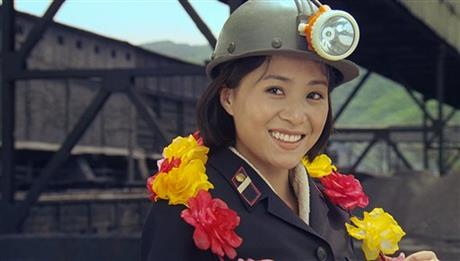- California Assembly OKs highest minimum wage in nation
- S. Korea unveils first graphic cigarette warnings
- US joins with South Korea, Japan in bid to deter North Korea
- LPGA golfer Chun In-gee finally back in action
- S. Korea won’t be top seed in final World Cup qualification round
- US men’s soccer misses 2nd straight Olympics
- US back on track in qualifying with 4-0 win over Guatemala
- High-intensity workout injuries spawn cottage industry
- CDC expands range of Zika mosquitoes into parts of Northeast
- Who knew? ‘The Walking Dead’ is helping families connect
N. Korean cinema: Kidnappings and evil Americans
SEOUL, South Korea (AP) — North Korea hates the currently scrapped Hollywood film that revolves around the assassination of its beloved leader, but the country has had a long love affair with cinema — of its own particular styling.
In the six decades since North Korea began to cultivate its own film industry, a South Korean director and his movie star wife have been kidnapped, a Godzilla-inspired monster movie has bombed at the box office in the South, American defectors have hammed it up in anti-U.S. propaganda films — and there has even been a foray into “girl power” cinema with the more recent “Comrade Kim Goes Flying.”
The U.S. blames North Korea for the recent cyberattack on Sony Pictures, which produced “The Interview,” and also for threats of terror attacks against U.S. movie theaters. Sony canceled the movie’s release. North Korea has denied a role in the hacking, but also praised it as a “righteous deed.”
Pyongyang began building its cinema industry in the 1950s as a wing of a propaganda machine meant to glorify the country’s late founder, Kim Il Sung, the grandfather of current leader Kim Jong Un. The elder Kim once declared movies to be the most important tool to educate the masses, according to archive material maintained by the South Korean government.
North Korean moviemakers have since dabbled with science fiction, action and romantic comedy, but they’re mostly expected to stoke public animosity against rivals Washington and Seoul, and to portray the Kim family as a fearless bastion against evil foreign imperialists.
North Korea’s progress in filmmaking technology has been slow, especially when compared to a South Korean film industry that’s the envy of Asia.
The country’s relative isolation means North Korean filmmakers rarely get the opportunity to work with foreign artists. A notable exception was “Comrade Kim Goes Flying,” a romantic comedy from 2012 about a young female coal miner who dreams of becoming a trapeze artist. The movie was co-produced with Western partners.
The 1980s were a heyday for North Korean movies. The current leader’s father, Kim Jong Il, was an ardent movie buff and ensured generous funding for filmmakers.
When Kim soured on the quality of films produced by his countrymen, he ordered the abduction of South Korean film director Shin Sang-ok and his then-wife, actress Choi Eun-hee, in 1978, Shin said after he escaped the North in 1986.
Shin shook the North Korean movie scene with his entertainment-focused works. They included 1984′s “Love, Love, My Love,” responsible for the first on-screen kiss in North Korean films, and “Runaway,” an action film released the same year that included an exploding train, according to a South Korean government website.
Shin and Choi managed to escape during a business trip to Vienna in 1986, a year after Shin completed “Pulgasari,” a science-fiction film inspired by Japan’s iconic “Godzilla” series. Pulgasari, which features an actor waddling around in a padded monster suit, flopped when it was released in South Korea in 2000 during a period of warmer relations between the rivals.
North Korea has long shown American characters in its movies as villains, sometimes played by North Koreans in makeup, but also by actual Americans who defected to the North in the 1960s. Four such Americans appeared together as evil capitalists and military officials in “Nameless Heroes,” a 20-part propaganda film series filmed from 1979 to 1981, according to the South Korean government website.
















